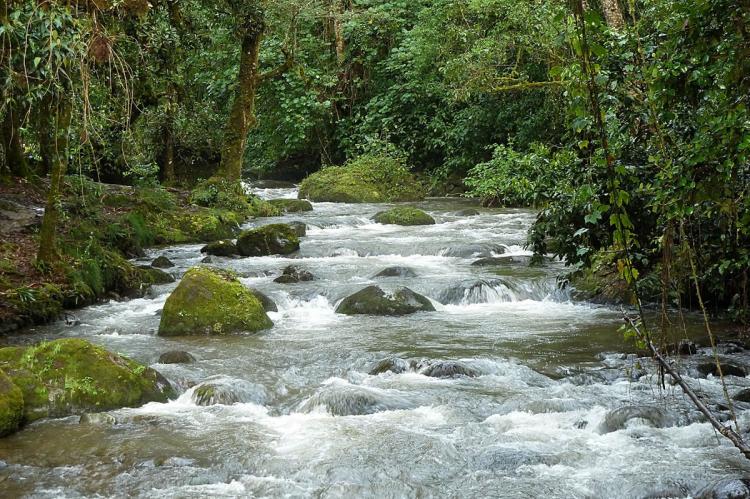Savegre Biosphere Reserve (Costa Rica)
The Savegre Biosphere Reserve is located on Costa Rica's central Pacific coast and borders two other biosphere reserves in the north and east. Due to its varied topography and its heterogeneity of microclimates, it is one of the most biodiverse sites in the country.
Savegre Biosphere Reserve
The Savegre Biosphere Reserve is located within the Savegre River basin on Costa Rica's central Pacific coast, 190 km (118 mi) from the capital, San José. The reserve's total area is 312,914 ha (733,227 acres), including three biological corridors: Los Santos, Rio Naranjo, and Path of the Tapir.
The Savegre Biosphere Reserve borders the La Amistad Biosphere Reserve in the north and east and the Cordillera Volcánica Central Biosphere Reserve in the north. It represents the first and only reserve in the country to contain an important marine-coastal component. Consequently, the site has a high value in ecosystems, biodiversity, water resources, and connectivity.
The Biosphere Reserve extends from Manuel Antonio National Park, along the coast, to Hacienda Baru National Wildlife Refuge and the Barú River. From the coast, it follows the Savegre River basin and the basins of numerous other rivers, such as the Barú, upwards to the central mountain range at 3400 m (11,155 ft) of altitude.
Los Quetzales National Park is located within the Biosphere Reserve's boundaries. In addition, it includes the Cerro Nara Protected Zone, Los Santos Forest Reserve, Cerro Vueltas Biological Reserve and four national wildlife refuges (Páramo, Hacienda Portalón, Transylvania, and Hacienda Barú).
Due to its varied topography, as well as its heterogeneity of microclimates, it is one of the most biodiverse sites in the country, being home to 20% of the country's total flora, 54% of its mammals, 59% of its birds, and about 330 species of butterflies.
The Savegre Biosphere Reserve comprises two areas with a high level of endemism in Costa Rica, the upper parts of the Cordillera de Talamanca and west of Panama, and the basal forests of the South Pacific.
The reserve contains 71 species of endemic plants (e.g. Passiflora gilbertiana, Bartlettina silvicola, Pseudima costarricense, Sarcaulus spp., Pitcairnia halophila), palm species (Chamaedorea piscifolia and Chamaedorea incrustata) and trees (Matisia tinamastiana y Lacmellea zamorae).
The Savegre Biosphere Reserve has a population of approximately 50,000 inhabitants, who live mainly in the transition zone, with a few inhabiting the buffer area. The main productive activities are agriculture and livestock (about 75%).
Crop production is significant in areas with higher altitudes and includes plantations of apple, plum, pomegranate, blackberry, strawberry and avocado, as well as milk production and trout farming.
Coffee and livestock are farmed between 800 - 1,500 m (2,600 - 4,900 ft). Below 800 m (2,600 ft ) is the area with the lowest forest cover and, therefore, the highest land use intensity. The main economic activities are palm oil, forestry, vanilla, annual crops, cattle rearing, and artisan fishing.
Ecotourism has increased significantly in recent years and has become a source of socioeconomic growth in the region.
